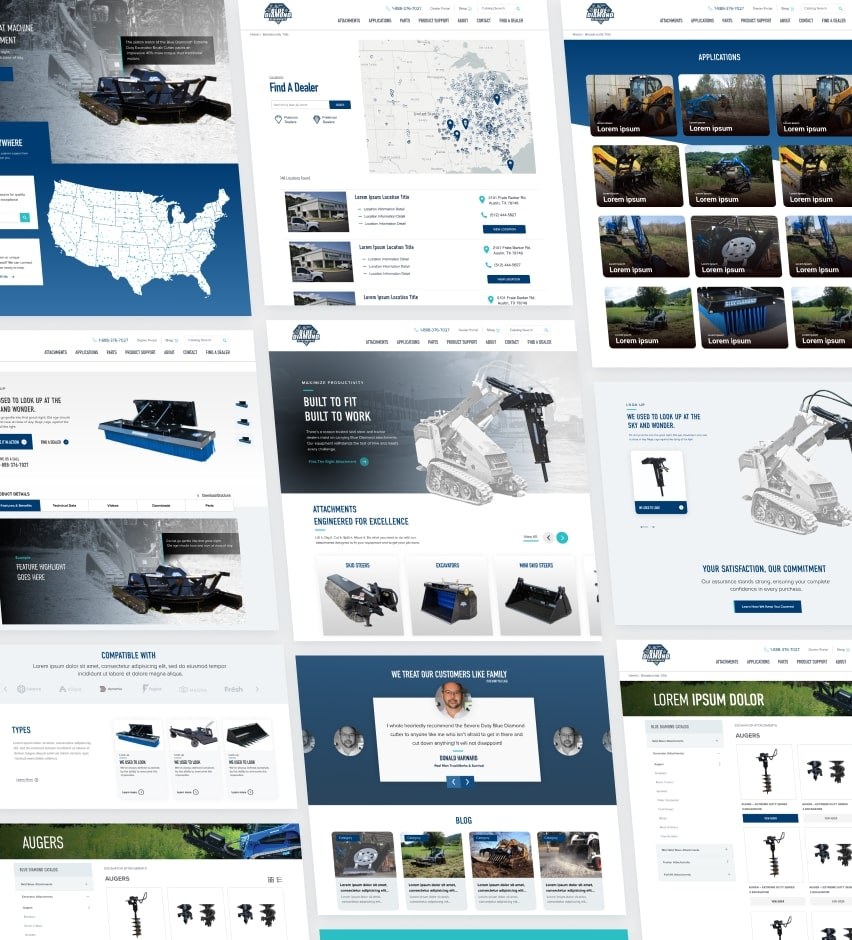

10 Tips for Maintaining a High-Performance B2B Website
B2B brands often celebrate success as a milestone. They view high conversion rates, sales, and improved leads as a testament to hard work, innovation, and strategic vision.
There’s No Autopilot for B2B Websites
But there is one fundamental often overlooked. Success, while gratifying, is merely the beginning.
Keeping your foot on the pedal requires expertise in analytics, content, development, design, and more. Here’s a look at what’s needed to stay ahead of the pack.
Multi-discipline Tactics for Continuous Improvement
Adopt A Data-Driven Approach
Continuously leverage data analytics tools to inform decisions, enhance targeting, and improve outcomes. Utilize metrics for insights into user behavior, market trends, and performance indicators.
Prioritize User Experience
Create intuitive interfaces, streamlined navigation, and engaging content to maximize user satisfaction and retention. Prioritize accessibility, responsiveness, and usability.
Continuously Optimize Website Performance
Employ techniques like caching, image optimization, and code refinement to enhance speed and reliability. Regularly monitor metrics and conduct performance audits to identify bottlenecks and opportunities for improvement. The Google Lighthouse website testing tool can identify opportunities for improvement.
Content Excellence
Produce high-quality, relevant content that educates, entertains, and engages audiences. Conduct thorough research, utilize storytelling techniques, and maintain consistency in voice and style to establish thought leadership and resonate with target demographics. Update existing content with fresh information and optimize keywords based on keyword insights.
Continuous Monitoring and Analysis
Monitor website metrics and market trends to identify opportunities and challenges. Utilize data-driven insights to inform strategic decisions, optimize performance, and drive continuous improvement across all aspects of website operations.
Customer Feedback Integration
Solicit and analyze customer feedback to understand needs, preferences, and pain points. Integrate insights into website design, content strategy, and product development.
Regular Updates and Maintenance
Implement a proactive maintenance schedule to address software updates, security patches, and other best practices. Conduct regular audits to identify and rectify issues.
Consider Emerging Technologies
Embrace innovations like AI, machine learning, and automation to enhance website functionality and user experiences. Explore opportunities to leverage new tools and capabilities for competitive advantage.
Continuously Optimize Conversion Paths
Analyze user journeys, identify conversion barriers, and optimize funnel paths for maximum efficiency. Test and refine CTAs, landing pages, and checkout processes to minimize friction and drive higher conversion rates.
Scalability and Flexibility
Design systems and processes with scalability to allow for growth and adaptation to changing needs. Embrace flexible architectures and agile methodologies to respond quickly to market shifts, emerging opportunities, and evolving customer demands.
Partner With DBS Interactive For Sustainable Excellence
Maintaining a high-performance B2B website requires a multi-disciplinary approach. Teams must excel in data analytics, UX design, content creation, and technical optimization to leverage insights, enhance user experience, drive engagement, and ensure security.
Collaboration with partners and a flexible mindset are crucial for innovation and scalability. A digital agency specializing in these skills can provide the expertise to round out your team to achieve optimal results.
Download Our Free Guide Compare your site performance to competitors
FAQs
Optimizing performance is an ongoing commitment. Using tools like Google Lighthouse to audit your website performance can help you focus on what needs to be done to optimize it. Examples are image optimization, caching, and code refinement.
To stay competitive, websites need to continuously improve to enhance user experience, boost search engine rankings, ensure mobile optimization, strengthen security, increase conversion rates, improve brand reputation, provide a competitive advantage, and demonstrate commitment to accessibility.
Regular updates to the website keep the site secure, running smoothly, and up-to-date with the latest software. This prevents technical issues and improves user experience.
To ensure that your website grows with your business, regularly update content, use a scalable design, optimize for SEO, ensure mobile-friendliness, monitor performance, utilize a robust CMS architecture, and update security features.
Website monitoring is important because it helps optimize performance, ensures security, maintains uptime and reliability, enhances user experience, ensures compliance, boosts search engine rankings and provides valuable feedback and analytics.



